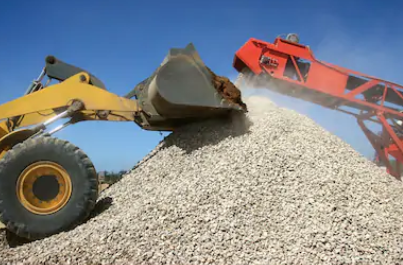THUNDER BAY — The effects of geological processes that created an abundance of gravel in the unorganized townships north of Thunder Bay millions of years ago are weighing down residents and campers at several area lakes.
Two Thunder Bay companies propose to open three new gravel pits in relatively close proximity, in the vicinity of Trout, One Island and Hawkeye Lakes.
Trout Lake-area property-owners are already scheduled to go before the province's Local Planning Appeal Tribunal next month regarding a proposed Bruno's Contracting pit on private property near the lake. The project received the necessary rezoning approval from the Lakehead Rural Planning Board two years ago.
Two other projects have surfaced more recently, and are going through the regulatory process.
Bruno's also proposes to open a pit in the One Island Lake area, on Crown land on the southwest side of Gilbride Road, while Milne Aggregates wants to develop a gravel pit on Crown land near Hawkeye Lake.
Mary Anne Comuzzi, a residents' spokesperson with property at Hawkeye, says "We already have 37 gravel pits in the Lappe area. It's getting out of hand, really out of hand."
Comuzzi said the Ministry of Natural Resources and Forestry, which is responsible for permitting and licensing pits, "has not been our friend."
That echos comments made by other rural property-owners dealing with gravel pits around Thunder Bay in recent years.
"This is destructive," Comuzzi said. "If you ever did a Google map in our area, it looks like a bomb went off. It's just gravel pits."
Bruno's Contracting representative Dante Di Gregorio said the region just north of the city is a well-established gravel hub for servicing northwestern Ontario.
Di Gregorio said the need for aggregate sources is market-driven.
"As long as the demand side is there, the needs have to be met somewhere...If these aggregates don't come from locations that are close to market, they have to come from locations farther from market, both in terms of higher cost to the taxpayers and the footprint associated with getting them and moving them to where they need to be," he said.
Di Gregorio added that he feels aggregate extraction and recreational use are both approved and supported uses of rural land, which have coexisted compatibly for decades.
Provincial regulatory process draws mixed reviews
Comuzzi alleges that Bruno's plan for the One Island Lake pit is on a large enough scale that it would threaten traffic safety, prematurely destroy local roads, create air and noise emissions 24/7, put groundwater and surface water systems at risk, and reduce land values.
"The MNRF fails to consider the cumulative effects of multiple aggregate pit licences and the overall land use planning conflict between industry and residential/recreational uses," a statement she distributed to landowners says.
But Di Gregorio believes the province has taken a "cohesive" approach to the development of mineral aggregate resources.
He said there are mechanisms in place for regulating the relationship between extraction and recreation, "and we and other operators believe those mechanisms are functioning as they were intended."
Di Gregorio said his company is collecting feedback as required by the province, will review it, and intends to "work with the stakeholders."
Milne Aggregates did not respond to inquiries from Tbnewswatch about its proposal.
According to Comuzzi, its pit operation would create problems similar to Bruno's.
She said it's within 120 metres of a designated sensitive wetland, and less than 800 metres from a dozen residences on the west end of Hawkeye Lake.
"We're putting the ministry on notice. We're going to be protesting, and you name it. We're really up in arms," Comuzzi said.
MNRF spokesperson Jolanta Kowalski said sand and gravel play a vital role in economic growth in Ontario.
In a statement to Tbnewswatch, she said a number of planning and environmental matters are considered when reviewing an aggregate licence application, including the effect the operation would have on nearby communities.
"We are committed to limit impacts to our communities and the environment," Kowalski said.
She said the government has also created a more robust application process for existing pit operators seeking approval to extract below the water table.
Kowalski added that recent legislative changes "will further empower municipalities and others by allowing them to officially object to an application and provide the opportunity to have their concerns heard by the Local Planning Appeal Tribunal."
